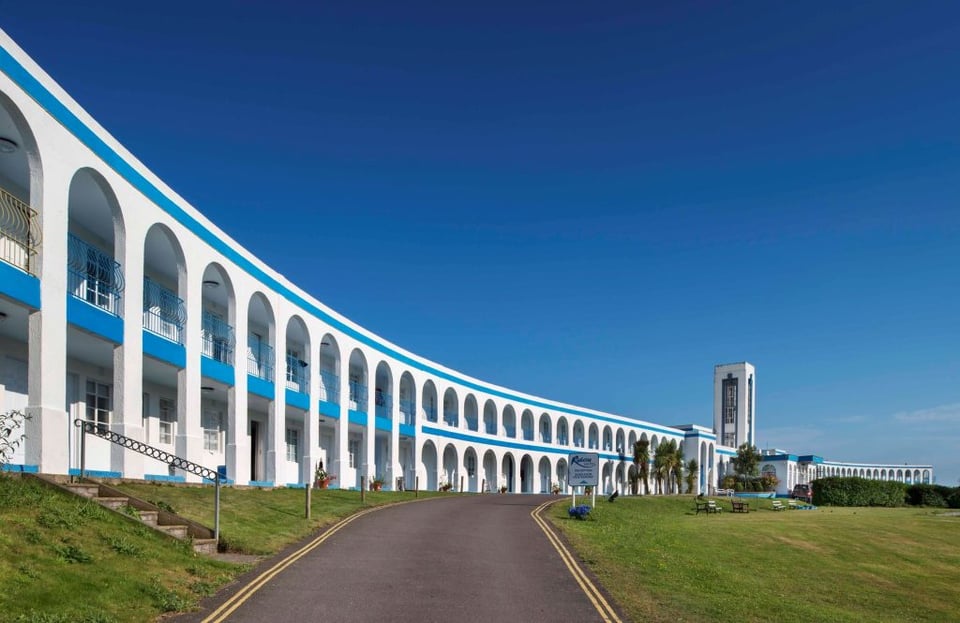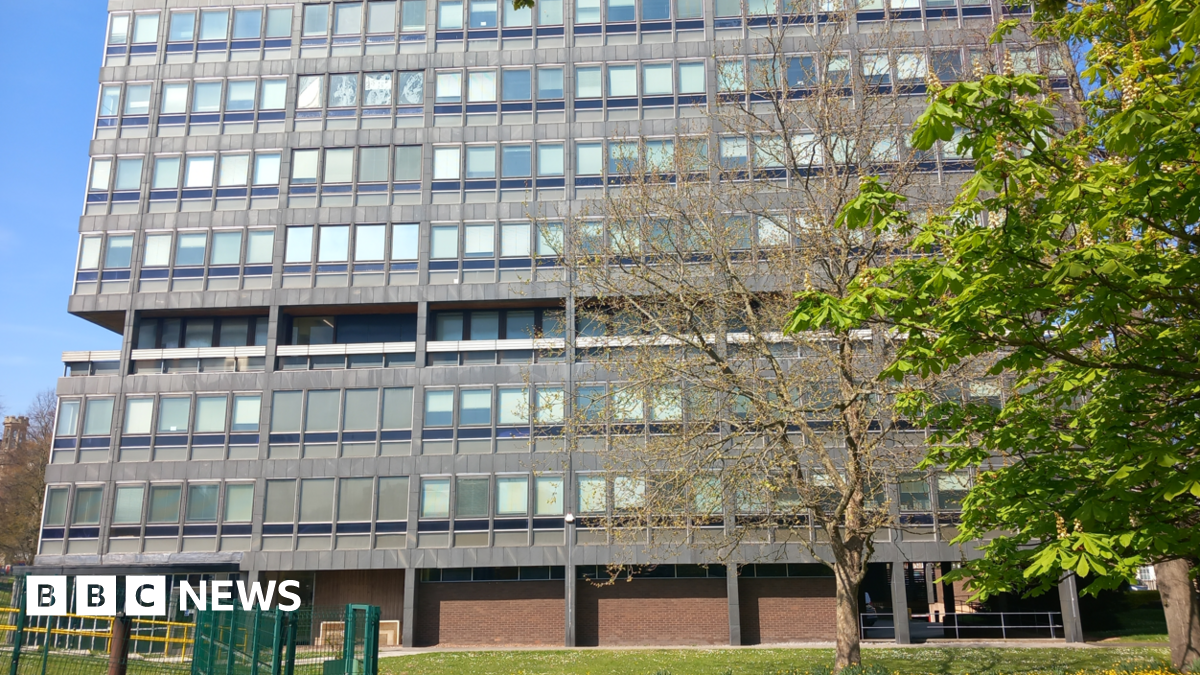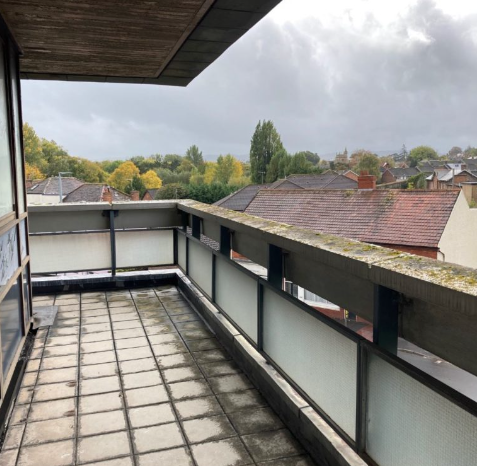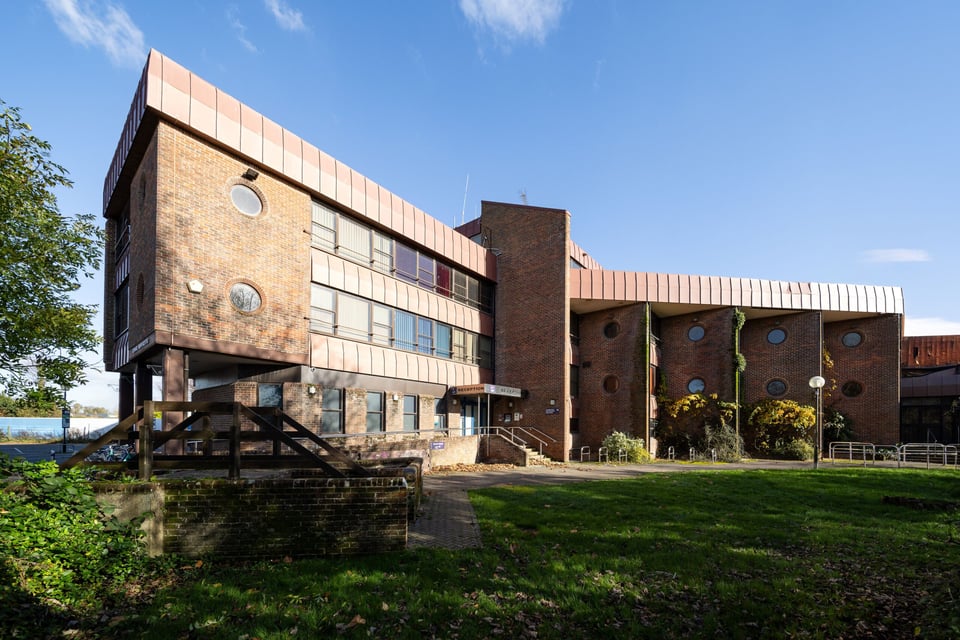Field Notes: 16 April + BONUS Burgh Island!
Exmouth scouting trip, bonus Burgh Island content, the Riviera Hotel in Weymouth and other west county C20 news and events.
This week’s field notes were due to be about a trip to Truro. Then the rains came and I couldn’t face the idea of trudging up and down hills in a downpour, then sitting damply on the train back up to Devon.
Exmouth, Devon
It was sunny a couple of weeks back, when I visited Exmouth in East Devon. It’s a classic fishing village overwhelmed by the nineteenth century. As a Victorian seaside resort, its twentieth century architecture lurks around the edges.
We went past the boarded up Samantha’s nightclub (once the Regal Cinema, 1925). Then on to the front where the Octagon (1960s) is now open as a restaurant, with the sea-facing windows restored. I was pleased to see one of the giant plastic ice-cream models was still in place. We were too late for their breakfast menu but are planning to go back to try it.

Also along the sea front is the Pavilion (1933). the Harbour View Cafe seems like it has dropped from the 1960s not least because of the volume of old signs. The building itself is from the 1890s when it was built for a yacht club.
Walking back along Louisa Terrace and the Beacon I spotted two hotels still with 1970s signage on their much earlier facades. I also noticed the old Chronicle offices (?1939) is now a restaurant leaning into the building’s moderne aesthetic. From the outside, that’s mostly a stylised brick front. I’d remembered the garage across from it as being more 1930s moderne than it actually is.
Finally, I couldn’t not stop to snap the 1930s apartment blocks on Rolle Street. When I had a newspaper round, I mentally called these “the Poirot flats” for fairly obvious reasons.

They are predominately brick, with concrete window lintels and curved windows. Those are now uPVC but used to be Crittal. That’s a for sale sign on one of them: you can explore the listing here.
Burgh’s on film
Last week I published a deep dive on Burgh Island Hotel were I explored its rise, its fall and its re-emergence. It got so long that I had to cut some material about some films that have featured it.
I’ve just made my notes on Burgh Island’s appearances on film available for paying subscribers, as a bit of bonus content. A £3 monthly sub works out as about 70p a week and gets you early access to the deep dives plus bonus bits.
Hope for the Riviera
The Riviera Hotel at Bowleaze Cove in Weymouth was built in 1937. Designed by L Stewart Smith using reinforced concrete. It’s a sweepingly large Art Deco hotel with 98 bedrooms and a slender tower, all painted white or blue.

Pontins bought it in 1958 and built a larger ballroom. It was listed in 1997, and stayed in the Pontins chain until 2000. During the initial pandemic lockdowns, five years ago, it was used to provide housing for homeless people. In 2023, Storm Eunice damaged the ballroom roof so badly it fell in and the hotel was added to the C20 Society’s ‘at risk’ list. The site is currently considered unsafe by Weymouth and Portland police.
Dorset Council’s conservation and planning enforcement officers are apparently working on the building’s future.
Local news of C20th buildings
In which I fight my way through local ad-laden news sites to find stories about twentieth century buildings and related topics. A bumper edition today as it’s covering two weeks.
Somerset sells C block
The County Hall in Taunton, Somerset is made up of several blocks. And like most county councils, Somerset is selling off its property assets. C block has just sold to a developer who plans convert it to key worker accommodation.

Part of County Hall in Taunton to be turned into keyworkers flats - BBC News
Somerset Council sells part of County Hall in Taunton to create flats for keyworkers.
C block was built in the 1970s and looks to be a straight forward panel system build. The balconies on the third floor are a nice touch, if in dire need of a power wash.

BCP sells Christchurch Civic Offices and markets Poole
Bournemouth, Christchurch and Poole Council (BCP) in Dorset have sold off a council building as well. With this building, I’m trying to pin down a date to see if it falls within my 1920-1980 range. I’ve found a suggestion the plans were published in 1978, which fits with what looks like a postmodern design. Any further details would be welcome!

BCP are also reported to be selling the Grade II listed Art Deco Poole civic centre (L. Magnus Austin, 1931) though I was unable to find details on the marketing site that’s been cited in the news.
Events
Visit the old Penlee Lifeboat Station
This coming Monday, 21 April, is one of six days this year where you can step inside the old Penlee lifeboat station. Built in 1911-13 by William Tregarthen Douglass and improved in the 1920s and 1930s for motor powered lifeboats. In 1960, the building was upgraded again to house the Solomon Browne. The Solomon Browne was lost with all hands as they attempted to save the people on the Union Star cargo ship on 19 December 1981. The building closed in 1983, and remains as a memorial to the disaster. It was listed in 2023.
Twentieth Century Seaside Architecture seminar
The Seaside Heritage Network are holding a free online webinar about C20 seaside architecture on 22 May. The speakers are:
Dr Kathryn Ferry on how entertainment buildings were influenced by the 1951 Festival of Britain.
Dan Thompson on Margate’s Brutalist tower block, Arlington House,
Andrew Clay about the innovative aquariums designed for resorts around the coast in the 1980s and 90s.
I’m looking forward to this one!
If you know of an event or news item you think I should know about, you can contact me on Bluesky.
If you’re enjoying this newsletter, feel free to share it with others.
If someone has sent you this, you can subscribe below. A free sub will get you the weekly field notes and notice that a deep dive has been published. A monthly sub of £3 will unlock the deep dives and bonus material early.